Reconstructing Los Angeles: A Journey to the Other Side of L.A.
There are certain places that are still empty enough to give us a second chance, even as the empire of Los Angeles moves ever onward, making a reverse exodus into the region’s last frontier.There are certain places that are still empty enough to give us a second chance, even as the empire of Los Angeles moves ever onward.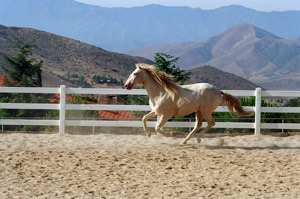
Letter From the West is a monthly series by Deanne Stillman that explores what is going on in our wide open spaces and what we do to each other and all that lives there.
When we speak of Los Angeles, there are signposts and signifiers: the beaches, the studios, Beverly Hills, Malibu. But rarely is there mention of the Antelope Valley, the Wild West half of Los Angeles County that lies just beyond the San Gabriel Mountains in the high Mojave Desert. Strangely, to hear and read of Los Angeles, it’s as if the Antelope Valley did not exist. People don’t even speculate that it might be out there somewhere, like Atlantis, for example; it’s lost to opinion makers, lost to those who have come to define the region (with the notable exceptions of Mary Austin, Mike Davis and Aldous Huxley), lost to the predominant publishers of news about the area such as The Los Angeles Times and Los Angeles Magazine, and, more important, lost to Los Angeles itself.
My explorations of L.A.’s least-talked-about valley began in 2002, when I met the photographer Mark Lamonica at the Southern California Booksellers Association award ceremony in the grand ballroom at the Pasadena Doubletree Hotel. We were there because we had both been nominated for best nonfiction book of the year, he and columnist Patt Morrison for “Rio L.A.” and me for “Twentynine Palms.” Mark was immediately struck by the cover of my book; it featured a Joshua tree, and he approached me to talk of the strange desert elder. “Do you like Joshua trees?” he asked. I explained that I had been wandering the Mojave east of L.A. for the past two decades, and in particular had a long-running affair with Joshua Tree National Park. “Well,” he continued, excitedly, “I’m painting a Joshua tree right now. I have one in my backyard.” A Joshua tree in his backyard? Of course, I had to know more.
|
|
“Where do you live?” I asked. “In the Antelope Valley,” he replied. “Lancaster. Ever hear of it?” Well, I knew a little, the usual desert lore — that it was an outlying suburb of Los Angeles near which or in which or around which some gangbangers and white supremacists lived and that occasionally upon its horizons one could see the hallmark of high-desert meth chefs — exploding trailers. I also knew that like many desert cities, it was base camp for stunning scenery — years earlier I had spent an afternoon wandering its magnificent poppy fields, which look like the place Judy Garland fell asleep in “The Wizard of Oz” (and in fact, as I would soon find out, she lived in Lancaster when she was a child, and so did John Wayne). “You should come up for a visit,” Mark continued. “There are Joshua trees everywhere. And if you love the desert — well, you’ll just have to see for yourself.”
So I did. In fact, since then I’ve spent a lot of time in the Antelope Valley and I’ve learned many things. These things connect us to the past, present and future, standing in direct contrast to the standard L.A. narratives which say that we have no past or future, and that our present is bleak and dreary. I speak not of chirpy boosterism, but of reappraisal, of Los Angeles as a place defined not just by disaster but by deep time and outer space, not just by freeways but by other, less crowded trails, not just by shallow, pretty and depressed people but by astronauts and farmers and shepherds and cowboys, robbers and cops, Shoshone Indians, conquistadors, the cavalry, seekers of gold and other treasure, horse thieves and hermits and dreamers and bikers, carpenters, masons and ditch-diggers — the whole American parade.
Why has this history vanished? It’s a peculiar state of affairs for a region whose first and for many years most influential novel, “Ramona,” was about the forgotten. Published in 1884, Helen Hunt Jackson’s widely read work told the story of a doomed love affair between a tribal chief and a half-Indian girl who grew up in the California mission system. Written to publicize the plight of Native Americans, “Ramona” launched a revival of California Mission architecture, drew countless tourists to the state, and, as Carey McWilliams has noted, ultimately provided the region with a cultural identity. Thousands of postcards were minted, picturing the birthplace of Ramona, schools attended by Ramona, and the place where Ramona got married. Soon there were towns that changed their names to Ramona (including one in Oklahoma) and people across the state were staging Ramona pageants. Taking advantage of new railroad service to Los Angeles and San Diego, tourists flocked to Southern California to visit “Ramona Country” and thus was the region’s first narrative of itself inscribed forever. “Some day the Los Angeles Chamber of Commerce should erect a great bronze statue of Helen Hunt Jackson at the entrance to the Cajon Pass,” McWilliams wrote. “For little, plump, fair-haired, blue-eyed H.H. as she was known to every resident of southern California, was almost solely responsible for the evocation of its Mission past, and it was she who catapulted the lowly Digger Indian of Southern California into the empyrean.”
At a time when the Indians and buffalo had been cleared from the frontier and the age of the great cattle drives was coming to a close, other writers followed Jackson’s path, chronicling an America that was quickly vanishing. In 1884, reporter Charles Lummis walked from Cincinnati to Los Angeles, filing dispatches for the L.A. Times along the way. In the Southwest, he fell in love with the land and the people, proclaimed his love affair, and recounted the plight of Native Americans in his columns. As he made his way toward the coast, trekking through the back country of Southern California, he again chronicled the fate of the indigenous population. Once in Los Angeles, he became a reporter at the Times and soon launched a magazine called Land of Sunshine. As editor, he continued his fight for Indian rights and published the work of Mary Austin and Maynard Dixon and other writers and artists who documented the region in all its glory and transformation. And thus was Southern California as a character spawned, and droves of people headed for Paradise Lost to drink from the golden chalice — officially flowing on Nov. 5, 1913, with William Mulholland’s famous benediction: “There it is. Take it!”From 1884 to 1920, the population of Los Angeles had grown from 100,000 to 2 million. What Native Americans once called the Valley of Smokes (yes, for the frequent fires) was quickly becoming a strange whirlpool of progress where self-help ambassadors, evangelists, studio moguls, hoboes, flappers, real estate speculators, gangsters, stars and all manner of desperadoes waited for a break, big or small, on the back lot, in downtown flophouses, Malibu mansions or in their shiny new cars just off the amazing new assembly lines in Detroit. The concept of Los Angeles as a terrain was obliterated, and in the modern madness a new vernacular was born. L.A. was a cesspool of vice and corruption, said Raymond Chandler; it was a dystopia, said William Faulkner; it was a disease mutating itself upon the landscape, said all of the others, and the narrative didn’t stop at the end of a decade or era because nothing ever finishes so cleanly.
In fact, the narrative itself has replicated and continues through this very moment. Today, the official town crier of Los Angeles is a doomsday prophet. For this breed of scribe (Mike Davis, Peter Plagens, Joan Didion, Mark Reisner and others, including, from time to time, myself), the land is back, front and center, under the carpet, outside the window, everywhere — as a Messiah. Not only is the region plagued by vice and corruption, but it’s defined by the Old Testament, ready to deal out retribution in the form of wildfires, torrential flooding, mudslides, monsoons, offshore tsunami-producing canyons, and, of course, the Big Wednesday of earthquakes, waiting to rise up and give Sodom and Gomorrah one more wicked ride.
Who needs a disaster? The place has already been carved up, filleted and picked over in a literary deconstruction with no end in sight. But imagine another possibility. What if Los Angeles had another way of looking at itself? What if we put on a new pair of glasses? In the 1940s Aldous Huxley himself went to the Antelope Valley; he wanted to try the Mojave for a spell, and it seemed to suit him. In fact, during his sojourn, so bright was the desert’s light that the blind writer literally regained his vision, and for the first time in his life he was able to acquire a driver’s license. What if Angelenos were able to do the same — visit the desert and cast off our blinders?
Here’s what I have come to see in the Antelope Valley: There are certain places that are still empty enough to give us a second chance, even as the empire of Los Angeles moves ever onward, making a reverse exodus into the region’s last frontier, reconstructing itself with every rev of the cement mixer, every blast from the bulldozer’s pipes (yes, even in these hard times, as the vast tracts of NOTHING DOWN McMansions lie empty, there is a renaissance going on, a massive transformation complete with a Laemmle theater and artist lofts, right in the heart of downtown Lancaster). This is what Mark Lamonica had predicted for the region years ago, when he first told me about the other side of Los Angeles. As Mike Davis wrote in “City of Quartz,” “The Antelope Valley is like a virgin bride, engridded to accept the future hordes.”
Indeed, the Antelope Valley is wide open, a giant bowl of sand waiting to be shifted into castles and dreams, ringed by mountains and buttes and punctuated by cholla and creosote and Joshua trees and junipers and occasional vast fields of golden poppy. To stand in the middle of the Antelope Valley in a grove of Joshuas and a monsoon of silence is to be rendered into string theory; there’s so much space out here that all memory of a previous life is blasted to smithereens. It seems perfectly natural to lie down like a lizard and let your eyes slide to the back of your head as you sink into the sand and let your body temperature adjust to the ground’s (or so it seems). Perhaps you’ll stay here forever, you think; perhaps, in close proximity to the creatures who flourish in the alluvial fans and at the reptilian base of your brain, you are home at last. The sun rises high in the sky and now, flush with the sandbox, you enter deep time and you see that our bride — like all desert regions — is a bit of a trickster; while she is bereft of skyscrapers and artificial monuments and things that denote history to those who have written L.A.’s narrative, she is nevertheless a rich repository of dramas that predate the official record.
These dramas involve all the great themes — births, deaths, betrayals, connections, suffering, endurance and truth, all backlit (as I imagine them while I bathe in the sand on the vast valley floor) by the happy desert sun or the sparkling high-altitude twilight skies, or festooned with a double rainbow that occasionally manifests after a desert storm, stretching across the bajadas from what seems like one geologic age to another.
Such DNA is hardly the stuff of L.A.’s fabled disconnect, and in fact those who continue to berate the region for having no history should know this: Southern California — including all of what came to be known as Los Angeles — began to appear about 1 billion years ago. Obviously, this predates the Old World and in fact makes where we live the really really old world, devoid of cranky people though it may be (though I’ve always felt that road rage gives the lie to this particular notion). According to the U.S. Geological Survey, the first components of So Cal were not freeways, the studio system or gated communities, but materials that eked their way through Earth’s crust and mantle, or accumulated from rain and biological activity in the oceans, or were swept in as ash or dust from the atmosphere, whispering of the Big Bang, God’s click of the fingers, a mythical Liberace’s frenzy across the universal 88s, or perhaps of nothing. But their rest was not permanent and they were deranged by eons of volcanism and tectonic collisions, resulting in erosion and the reshuffling of sediments, followed by periods of calm interspersed with repeated cycles of upthrusting and tectonic fender benders, during which vast inland seas rushed in and consumed all and then disappeared, leaving sprawling alkaline floodplains in their wake — rendering the region a kind of geologic mosh pit whose fate is still determined by an ancient honeycomb of fault lines that could blow modern civilization from the thin membrane of sand that separates us from the abyss at any given moment. It’s hard to imagine how this would actually happen (sometimes I find myself thinking, how far into the air will I be hurled? But that concept seems so absurd, and besides, it’s a nice day yet again, so what am I, nuts?) but consider this — during the Paleocene, Eocene and Oligocene eras (65 to 24 million years ago), massive fault systems that predated the mighty San Andreas were responsible for the very mountain ranges on the central coast, heaving tremendous blocks of crystalline basement rocks and all the sediment that lay on top of them to that area and beyond.
It was around this time that the Antelope Valley began to emerge, in the western Mojave Desert, the most extreme part of the country’s most extreme desert, the one with the hot white heart and the gravelly tributaries and washes that seem to grow crunchier and craggier as you follow them toward the setting sun. Some of the oldest rocks in California are in the western Mojave, clocking in at 1.6 billion to 1.8 billion years, metamorphic boulders that are similar in age and character to those found at the bottom of the Grand Canyon. A portion of these have come to reside in the Antelope Valley, and others that are equally old form the bedrock geology of the San Gabriel Mountain Range, which lines the valley’s southern edge, separating it from the adobe jungle of the Los Angeles basin “down below.” The San Gabriels include some of the highest peaks in California, including Mount Baldy to the east of the Antelope Valley at 10,000 feet. The “pre-Cambrian basement” (as scientists call the range’s underlying foundation) is a treasure trove of fossils and decomposed life forms and throttled secrets that speak to a past so old that it’s almost beyond time, older even than the exhibits of the Hollywood Wax Museum, with the exception perhaps of Hugh Hefner’s smoking jacket, an antediluvian relic that according to rumor actually defies carbon-dating!
Additional trips into deep time are offered at the Antelope Valley’s northern edge, which is rimmed by the Tehachapi Mountains, a range that is much younger than the San Gabriels, checking in at a mere 1.2 billion years. The Tehachapis mark the beginning (or end, depending on which way you’re traveling) of Southern California, and at one point, when there was talk of having two states instead of one, would have served as the demarcation. Not quite as tall (the highest peak is 8,000 feet) as the San Gabriels, the Tehachapis are an equally rich repository of the ancient record, living evidence of the violent seismic activity that has sculpted and heaved forth the Golden State. Regarded by some geologists as the southern terminus of the Sierra Nevadas, the Tehachapis were home to Mary Austin, the great writer who documented the region and its residents — plant, animal and human — in her famous prose poem, “The Land of Little Rain.”
“Never believe what you are told,” she wrote, “that midsummer is the best time to go up the streets of the mountain … for seeing and understanding, the best time is when you have the longest leave to stay. And here is a hint if you would attempt the stateliest approaches; travel light, and as much as possible live off the land. Mulligatawny soup and tinned lobster will not bring you the favor of the woodlanders.”
The Tehachapi range meets the San Gabriels at the western edge of the Antelope Valley, thus isolating the region from the coast. With the buttes at the opposite end, the high-desert valley with a floor elevation of 4,000 feet is a kind of vapor lock which produces its own climate having nothing to do with coastal variations. The summers and winters can be extreme (110 degrees plus on days in July through September and down toward zero in January and February). Zero in the Mojave is not like zero on the East Coast or in the Middle Atlantic states. There’s no moisture to mitigate the cold, generally no snow to speak of (except in the mountains); during the cold season, the first words that come to mind are “this feels like a tomb.” The dry freeze cuts through the bone like a buzz saw, yet in the summer the lack of moisture is a comfort, especially when carried on a hint of a breeze, stirring things ever so slightly, riffling the sand here and there.
But a nice desert breeze can quickly become a gale-force swirl of air. During any time of the year, high winds sweep across the valley’s alluvial fans, kicking up dust devils and tumbleweeds and sometimes knocking tractor trailers over in mountain passes. The winds in fact are a valley signature, not just raising the hack on all living creatures and creating the well-known So Cal situation that is ripe for fires, but disturbing the peace in ways that are perhaps less celebrated though nonetheless disconcerting. “They’re strong enough to blow the nuts off a ground squirrel,” Joseph Wambaugh once wrote, speaking of the gusts in the Colorado Desert to the southeast of Los Angeles, in a time before the ground squirrel became endangered (not because of the winds affecting its reproductive power). I’ve seen ravens stymied by the gusts, going nowhere and flapping their chevron wings just to stay airborne, waiting for a thermal to come along and carry them to a new flight path. I’ve felt the white sands of the Mojave being blasted through my airways and hammered through my marrow, felt the desert tell me — make me — do nothing but wait till the whole thing blows over. To paraphrase the late Palmdale native Frank Zappa, the winds of the Antelope Valley can remove the paint from your car and destroy your windshield to boot. How do people put up with it? he crooned, and then observed that obviously they somehow did, because they’re all still there. Personally, I gave up on my car’s paint job long ago, when the atmosphere began to strip the stuff from my car during my countless trips to Joshua Tree National Park and its windswept environs. Generally speaking, I like the winds, and have come to regard them as a part of the desert side show. As Antelope Valley journalist Bonnie Stone has written, “The Antelope Valley Wind Festival runs from January 1st to December 31st. The mythical event acknowledges the benefits of 365 smog-free days.”In addition, to borrow a phrase from a great country song, when they’re blowing, I get to see a tumbling tumbleweed. The sight is an American birthright, one of those things we all should witness as often as possible, and a thrillfest every time. To this day, I remember the sight of my first tumbleweed. It was as big as a Volkswagen and it was bouncing across an old two-lane in New Mexico, on my very first day in the desert long ago, shortly after I had debarked from a plane and was heading to my dormitory on the UNM campus. “Welcome to the West, baby!” it called, and from that moment on, I was a goner. I often think of that moment, retreating inwardly to that particular landscape whenever I need to flee a situation, or just get to a point of calm. But of course, sometimes the winds in the Antelope Valley are simply too much, regardless of how many giant thistles are heading my way, at which point I stop in at the nearest bar to exchange tall tales of weather, announcing that I had just ducked a flying hubcap to cross the street for a drink. When the coast is clear, I head off for other adventures, such as scavenging at one of the Antelope Valley’s many wonderful thrift shops and discovering a treasure — a regional secret that valley cognoscento Lamonica revealed to me many moons ago. On a good day, you can find a new pair of Sketchers for $20 or an old piece of landscape art for even less, signed by an unsung master, and framed with wood from a cactus.
Unlike everyone else, our desert virgin cannot hide from the fierce desert blow. Nor is there any relief from the seasonal monsoons. In July and August, thunderstorms driven by slight shifts in temperature can dump several inches of water on parched desert sand in only a few hours. In fact, much of the valley’s four inches of rain per year comes during these storms. The runoff naturally follows the path of least resistance, which of course means running downhill. But because the Antelope Valley is relatively flat and cut off from the coast by mountains, the water has no place to go, except for ancient gullies and washes — those alluring pathways that take us right into the crust of the Earth, the Miocene Pliocene Holocene roads that animals have been traveling for eons, past the bones of their ancestors to and fro to and fro and into the 21st century. When the water courses through the time-worn avenues and carves out new ones, the animals vanish, and then the often dry creeks with classic names — the Amargosa, the Little Rock, Big Rock, Bob’s Gap, Deadman, Boulder, La Montaine and Bone Yard — fill instantly, sometimes carrying vehicles, people and animals that could not run fast enough or were flushed from their burrows to their doom.
Such was the case on Aug. 20, 2003, when a posse of thunderstorms swept across the Antelope Valley, unleashing torrents of rain and hail, finally stopping at Saddleback Butte, a spectacular, little-known county park. Once, it was frequented by prehistoric Native Americans who considered its prolific Joshua trees messengers of the gods. Now, it is the domain of the occasional hiker, coyote, snake, hawk or owl; meth freak, lost soul and/or other seeker of truth or beauty. On that August day, perhaps there was an arrangement between the storm clouds and the Joshuas, or perhaps the fact that the rains hovered over the thirsty trees that are a Mojave totem was an act of chance. In any case, Doppler radar near Edwards Air Force Base picked up the gathering doom and within half an hour a massive wall of water carrying all manner of desert debris — couches, shopping carts, giant boulders — was rolling across the eastern Antelope Valley, hurtling a two-ton truck through an arroyo.
But consider the benefits! The news crews were there and landed that day’s big story and, more important, Saddleback Butte, the ancient power vortex, was rejuvenated and, for days and weeks to follow, the perfume of the engorged Mojave creosote floated across the valley, carrying the message that all was good and pure. And in the immediate aftermath of the storms came the formation of desert lakes; as the rains subsided, Mark and I joined other pilgrims who gathered at the edges of the area’s enchanting and normally dry lakebeds, at Rosamond and El Mirage and Rogers (the lowest elevation in the valley). We were there for a desert baptism — some via kayak, others via a touch of the fingertips — and we gazed at the shimmering waters and there were herons and other birds which stopped for unexpected refreshment on their cross-country flights before the whole rain-borne spectacle dried up and vanished until next year. And when it did, it was as if there was no such thing as rain, no such thing as trouble.
On Jan. 9, 1857, our desert bride issued an eviction notice, in the form of the Fort Tejon earthquake, an 8.0 shaker along a portion of the San Andreas fault running through the Antelope Valley. The shaking along the fault lasted for two minutes. When it was over, the Kern River was flowing backwards. In the following days, aftershocks in the 6.0 range were felt up and down the fault and across the valley, and then, although slightly diminished in magnitude, for at least a year. Although the epicenter of the earthquake was in Parkfield, a small town north of the Antelope Valley, it became known as the Tejon quake because Fort Tejon — an Army fort where Indians lived — was the only place along the rupture with a sizable population and a building large enough to sustain major damage.
The Tejon quake went down in history as “the big one.” It was equal to or bigger than the San Francisco quake of 1906 and was the largest quake to hit Southern California in modern times. Many seismologists see it as a precursor of things to come. In the L.A. Basin, we are used to being warned of impending ruptures and of course we do not leave, just as residents of New Orleans did not leave their chosen land just because it happened to have been next to a crumbling levee, until one day the levee broke and it was too late. “L.A. is due,” we hear day after day; in fact it’s “overdue,” goes the refrain; any moment now, any one of the countless faults that crisscross So Cal could rupture and end the dream right now, and how about those new faults that the Cal Tech crowd keeps discovering? It’s hard to believe the warnings because, for city dwellers at least, the cracks and fissures are invisible, paved over, slathered with lawns, underneath parking structures, massage tables and skateboard paths, not unlike the faces of actors who have wiped out evidence of a past with botox and chemical peels.In the Antelope Valley, however, the truth presents itself, just as it always does in the desert, a region that in spite of mirage and sparkle and occasional trickery is essentially bereft of guile. To see L.A. County laid bare, all you have to do is head north to the valley on the 14, and then choose your pathway into the veins and arteries of our region, and even its very blood. When you reach Avenue S at Palmdale, look to your left and you will see what happens when the San Andreas meets another fault, the mighty Garlock, and civilization has made its way through. Here we have what geophysicist Susan Elizabeth Hough calls “the most famous roadcut in the world … motion on [the San Andreas] fault has bent and folded rocks in improbable ways. … The twisted rocks represent … continued motion on and squeezing across the fault zone.” The result is a massive and sheer wall of swirling layers of granite, an escarpment that spells out the past and perhaps the future of Los Angeles. It’s difficult to appreciate this rocky message with just a quick look through your car window; I suggest pulling off the freeway at the Lamont Odett Vista Point just south of the Avenue S exit. Here you can gaze across the freeway and ponder the roadcut. You will also see a classic desert paradox — to the right is Lake Palmdale, a body of water inside a depression on the San Andreas fault, the life force of nearby Palmdale housed in the very thing that could kill it.
But to me, these aspects of geology, geography, climate and weather are mere foreplay. I like to get to the center of things, and after months of exploring the mechanics of the Antelope Valley, I wandered into a county park called the Devil’s Punchbowl. The Devil’s Punchbowl is actually not just one but three bowls, a 25-mile-long displacement of rock caused by the San Andreas fault. As devotees of the West know, there are a number of places named after the guy with cloven feet and horns, and you can count on them for enchantment, and automatic laughs — followed by a request for directions — whenever you tell someone you went there. I myself have visited the Devil’s Golf Course in Death Valley and Devil’s Tower in Wyoming (the first national monument in the country, proclaimed by Teddy Roosevelt in 1906). On my list of similarly named destinations to visit are the Devil’s Canyon, Devil’s Gate, Devil’s Chimney, Devil’s Playground, Devil’s Dance Floor, Devil’s Kitchen, Devil’s Jump, Devil’s Staircase and Devil’s Elbow. For now, the Devil’s Punchbowl satisfies my urge for satanic-themed hiking, and after several deep soundings I’ve come think of it as the womb of the virgin bride, the very center of Los Angeles.
Oh, you can muck around in the city’s guts at the Beverly Hot Springs, on the corner of Beverly and Oxford, a subterranean oasis that pipes in hot mineral water from suppurating channels 2,200 feet below the pavement. And sure, there are others who have made a case that the area’s center is elsewhere. Writer David Kipen, for instance, in his piece “How Many Angels,” has actually triangulated the center of L.A. County with a compass, locating it in the San Gabriel Mountains, up a winding path that leads to Trail Canyon Creek, which takes him to what he figures is our very navel, at “Tom Lucas Camp, perched near Condor Peak and something called Big Cienega … features named after a little-known park ranger, an endangered species and a swamp: obscurity, extinction, and quicksand, all in one cleft of the map. …”
It’s a compelling argument, but as I see it, our true center is the Devil’s Punchbowl — actually a sacred spot at the very bottom of the bowl. Why do I say this? Come with me on a moonlight hike, and perhaps you’ll agree with my own kind of triangulation.
The full-moon hikes happen every month, weather permitting — just check the listings on devils-punchbowl.com and call in advance. As per its billing, the bowl is a deep geologic fissure that is a strand of the San Andreas fault, south of Highway 138 near the town of Valyermo, where Benedictine monks who have vowed silence supplicate and walk the cactus-studded chaparral, and serve food and prayer to hungry pilgrims (once, at the end of a long drive, Mark and I were revived by chicken soup from a barrel in the monastery dining room; the vegetables and herbs were grown in the garden, in the shadows of a sculpture of Christ’s feet). From the edge of the Punchbowl, you follow a trail into a sandstone abyss, a prehistoric desert wilderness of rocky crags that pinyon and juniper and manzanita call home. This is where wild horses of the Miocene once roamed (imagine — in L.A. County!) and where millions of years later you can see their spirits and hear their hoofbeats, if you sit on a ledge under the bright light of the moon goddess and watch the movie that plays across the cliff walls and listen to the soundtrack, the chattering creek in the beds far below, the cicadas rubbing their legs together in collective praise, answering the grind of civilization’s machine in the distance. Yes, get still and hear the desert’s ancient message, masked by Mulholland’s call but not to be forgotten:
In the licking of a coyote’s chops, in the blink of a lizard’s eye, in the unfurling of an evening primrose, in a flash flood, in the flap of a skipper’s wings, in the call of a golden eagle, in the thundering silence, in the chatter of a ground squirrel, in the skitter of a crab spider, on the back of a thermal, in the scent of a monsoon, in the unfurling of a Joshua tree’s lily, in the song of the North Star, in the paddle of a tortoise, in a dust devil’s swirl, in the sinking of the sun’s last pulse, at the break of a new day, in the pop of a zillion poppies, in the shifting of tectonic plates and the upthrusting of mountains, in the swirl of sands and the turning and turning of the hourglass, in the swipe of a bobcat’s paw, in the sinking of fang to flesh, in a raven’s glide, in a snake’s rattle, in the burst of a cloud, in the whisper of a wash, in the march of ants, in the hymn of a rock, in the collapse of a burrow, in the perfume of wet sage, in the shapeshift of a coyote from there to here, in the leap of an antelope, I’m where the whole thing started, and one of these days, if you …
And then the moon sank over a ridge and the ranger said the hike was over. I lagged behind as the others left, hoping to hear the rest, but there came no request for parking validation and not even a chirpy farewell. The voice in the Punchbowl had faded away, I realized; I climbed out and called it a night. Finally the place makes sense, I thought, as I headed away from the belly of Los Angeles towards the city lights; there is indeed a center.
Deanne Stillman’s latest book is the widely acclaimed “Mustang: The Saga of the Wild Horse in the American West,” a Los Angeles Times “Best Book ’08” and winner of the California Book Award silver medal for nonfiction. Her book includes an account of the 1998 Christmas horse massacre outside Reno, as well as the story of Bugz, the lone survivor of the incident. Her work appears in the L.A. Times, Slate, Orion and other publications and is widely anthologized. Her plays, including “Star Maps,” have won prizes in theater festivals around the country. She is currently writing “Mojave Manhunt” for Nation Books, based on her Rolling Stone piece of the same name. Follow Deanne Stillman on Facebook.
Your support matters…Independent journalism is under threat and overshadowed by heavily funded mainstream media.
You can help level the playing field. Become a member.
Your tax-deductible contribution keeps us digging beneath the headlines to give you thought-provoking, investigative reporting and analysis that unearths what's really happening- without compromise.
Give today to support our courageous, independent journalists.
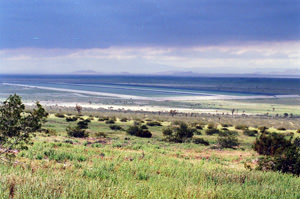

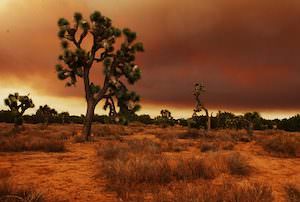
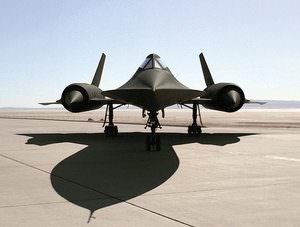
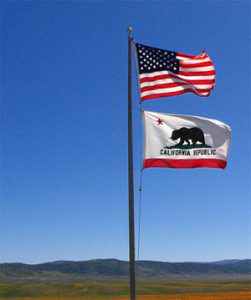
You need to be a supporter to comment.
There are currently no responses to this article.
Be the first to respond.